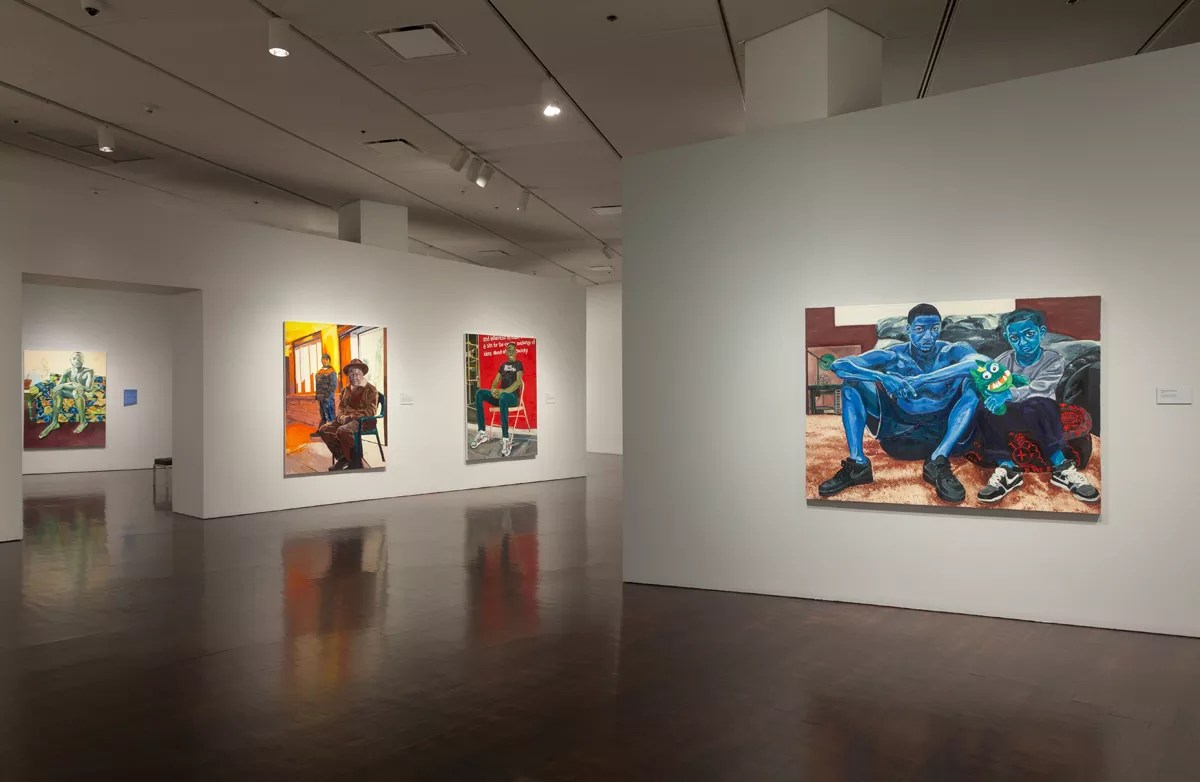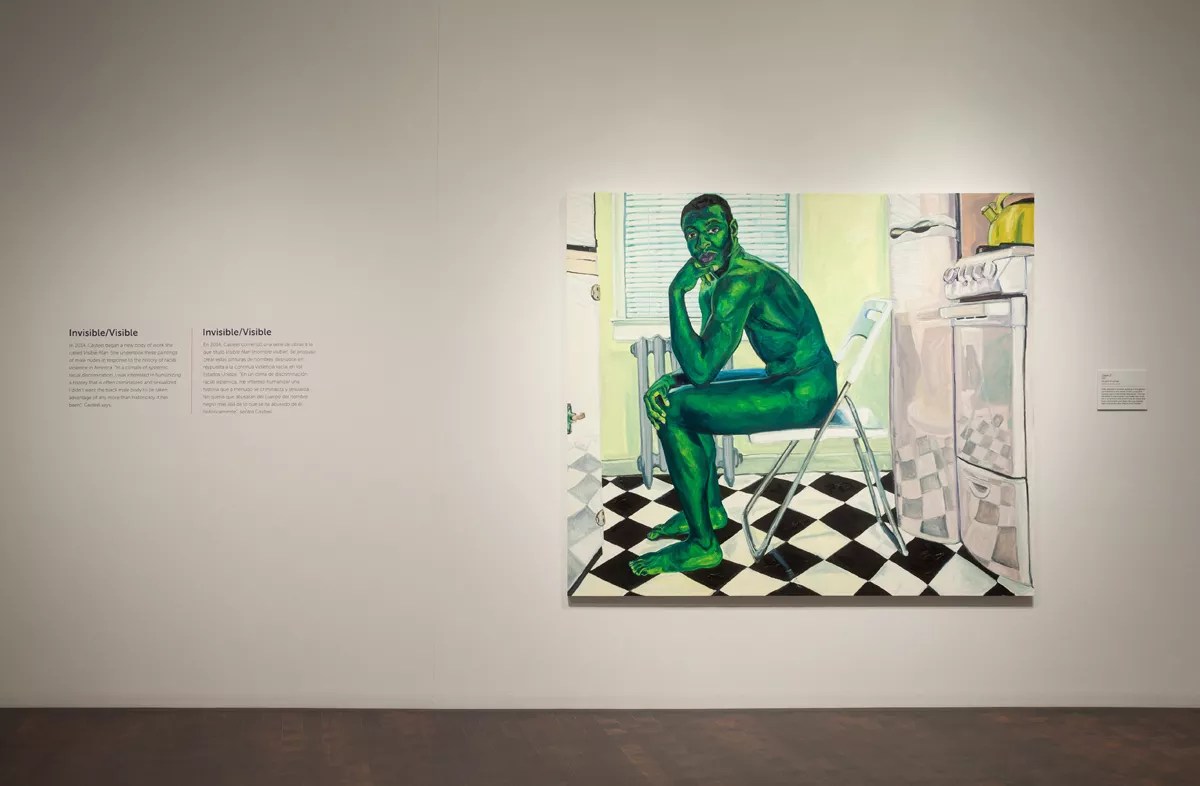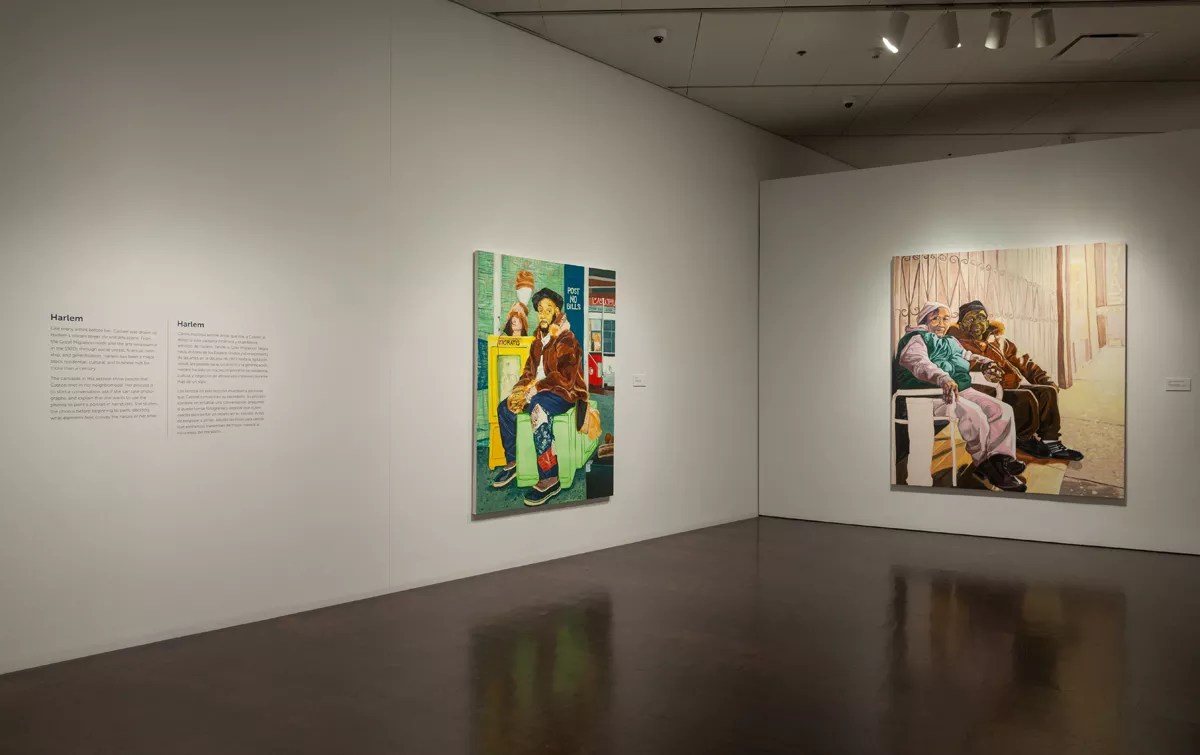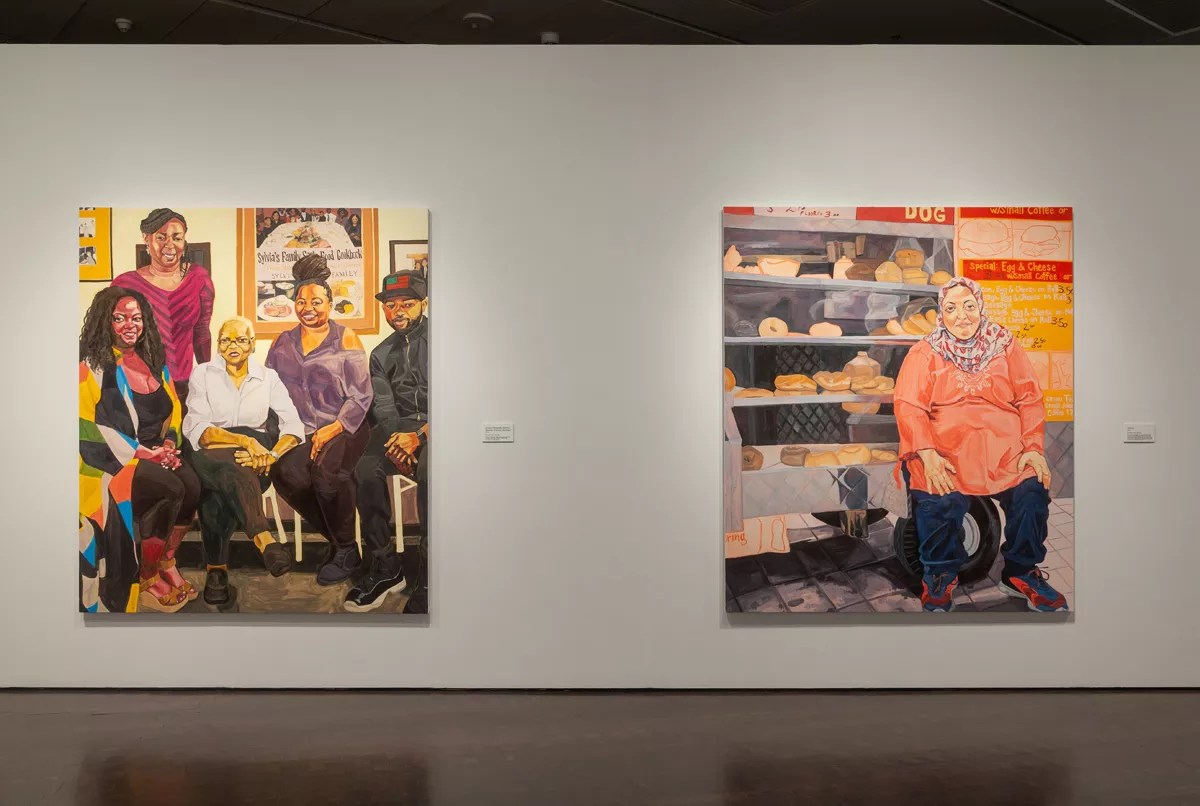
Courtesy of Denver Art Museum

Audio By Carbonatix
The Denver Art Museum mounts a solo show dedicated to a contemporary artist every year or so, though rarely does it choose an emerging artist just a few years out of graduate school. But that’s exactly the case with the striking Jordan Casteel: Returning the Gaze in the main-floor galleries in the DAM’s Hamilton Building, where it will run through summer. Looking at Jordan Casteel‘s paintings, it’s easy to see how she quickly rose to the top of the national contemporary scene.
Casteel was born and raised in Denver; she’s the daughter of Lauren Casteel, a social-justice advocate, and Charles Casteel, a prominent attorney. Her maternal grandparents were Margaret and Whitney Young, important figures in the American civil-rights movement. Although Whitney Young died long before Jordan Casteel was born and her grandmother passed away ten years ago, when Casteel was just out of her teens, she sees herself as a product of their legacy. And through their art collection, she was exposed to the work of some of the most important African-American artists of the twentieth century – including Jacob Lawrence, Romare Bearden and Faith Ringgold.

Installation view of
Courtesy of the Denver Art Museum
After getting a BA in studio art at Agnes Scott College in Georgia in 2011, Casteel went on to get an MFA at the Yale School of Art in 2014. The earliest paintings in the DAM solo date from this time; Casteel considers them her earliest mature pieces. After graduation, Casteel got her first big break: a residency at the Studio Museum in Harlem in 2015 and 2016. DAM contemporary curator Rebecca Hart was already aware of Casteel by then and sought her out at the Studio Museum, where she got the idea of presenting a solo at the museum. Preparations for Returning the Gaze began two and a half years ago, before several of the pieces in it had even been painted.
Will you step up to support Westword this year?
At Westword, we’re small and scrappy — and we make the most of every dollar from our supporters. Right now, we’re $20,000 away from reaching our December 31 goal of $50,000. If you’ve ever learned something new, stayed informed, or felt more connected because of Westword, now’s the time to give back.
Although the show has not been arranged chronologically, it does start off with the oldest works and ends with the newest. But a sensational body of early paintings has been installed near the end, which makes sense, as they are male nudes, and would be a shocking way to start the show. They would also misrepresent what Casteel is doing.

Courtesy of the Denver Art Museum
The show’s title refers to the way in which the models stare back at the viewer, and therefore were staring back at Casteel while she photographed them. When she’s beginning a painting, she takes many photos and then uses them as preliminary studies, sometimes pulling one detail from one photo, another from another photo, and so on. From there, Hart explains, Casteel starts a painting by laying in a color field that’s meant to capture the spirit of the particular piece. She then draws in the entire composition before going back and filling out the picture’s details. Some of the drawn elements are not filled in at all nor painted over; instead, they’re left as ghostly outlines, sometimes set right against densely painted passages and providing a dramatic contrast between the two approaches.
Casteel does portraits, typically monumental ones that are much bigger than life-sized. Until the last century, the portrait was the domain of the white gentry, and as a result, the concept is heavy with the weight of injustice. But Casteel alters the somewhat tainted medium to her own ends. Almost all of her portraits depict black men, though a few are women, and she was at least partly influenced in her selection of this subject by the Black Lives Matter movement. She has written about her trepidation over adding her own vision to the already well-established African-American figural tradition, which pushed her to create her distinctive signature style. Still, the influence of spiritual mentors is evident in her paintings, particularly that of Kerry James Marshall and, even more so, Alice Neel.

Courtesy of the Denver Art Museum
Marshall’s influence is reflected in Casteel’s loving depictions of ordinary African-Americans, as well as in the pictorial density of her compositions. Neel’s impact is even more obvious: Like Neel, Casteel makes her drafting emphatic, so that the lines that follow the contours of the figures are visible even when they’ve been painted over. Also very Neel-inspired is the way Casteel compresses the illusion of three-dimensional space; instead of employing the realist standard of one-point perspective, she employs many different points of reference simultaneously, and in some cases simply puts elements behind others to communicate the idea of depth. And then there’s the way that Casteel arranges the components of her composition to create an awkward sense of balance that seems like it could come undone at any time.
All of Casteel’s works from these past five years are pretty stylistically tight, but there are some distinctions, depending on the specific subjects. The early works focus on family members and close friends depicted in cozy indoor settings. Also set indoors are those early male nudes, but the subjects here are men who answered a call for models from Yale’s theater department, so they were strangers to the artist. During her residency at the Studio Museum, Casteel broke away from the comforts of Denver’s living rooms and the apartments of fellow Yalies and moved to the sidewalks of Harlem, where she captured people on the streets. The first of these paintings were set in daylight, but she soon turned to twilight and evening views. Casteel was also concerned with landmark African-American businesses, like Sylvia’s, a famous Harlem restaurant.

Courtesy of the Denver Art Museum
Another key difference between the Denver (and New Haven) paintings is that the early, indoor paintings can be related to snapshots, like those in a family album, while the outdoor paintings recall the street photography of social activists.
At the end of the show, where some of the most recent works are on view, Casteel reveals that she is exploring different directions in her figural paintings. In several, the sitter’s faces are outside the margins of the picture or otherwise hidden, which is radically different from those paintings in which the sitter’s eyes look right at you. Several of these newer paintings zoom in on the model’s laps as they sit on the subway; save for their beautifully detailed hands resting on their seated legs, the figures are anonymous.
Photos of Casteel’s paintings don’t do them justice. Neither their surprisingly magisterial size nor their incredibly inviting surfaces come through until you stand right in front of them. Which you’ll certainly want to do.
Jordan Casteel: Returning the Gaze, through August 18, Denver Art Museum, 100 West 14th Avenue Parkway, 720-913-0131, denverartmuseum.org.